Chordates Study Guide
Chordate Definition
“Chordates” is the term used to refer to those animals, including human beings/homo sapiens, that belong to the ‘Phylum Chordata.’ This class possesses a notochord (a cartilaginous, softer version of the spinal cord) in one or all the stages of their lifetime. This phylum includes large animals ranging from humans to all vertebrates to sea squirts and lancelets, etc.
What are Chordates?
The Phylum Chordata is the most familiar phylum in the animal kingdom, and these animals are referred to as ” animals with backbones. ” Animals from this phylum are classified based on a rod-like notochord or a dorsal nerve cord or spine at the dorsal side of the gut. In the case of vertebrates however, they have a vertebral column that replaces the notochord.
These rod-like structures provide support and shape to the respective animals. The chordates generally get their name from the term “notochord,” a rod-shaped structure found in the embryonic stage of all chordate animals and the adult stage of some adult chordate animals. It is located between the digestive tube and the nerve cord.
Characteristics of Chordates
- They generally have a post-anal tail that is propulsive
- Pharyngeal (throat) slits and pouches
- Dorsal hollow nerve cord that generally develops into a spine or spinal cord
- A metameric segmented body with a closed blood system type
- A ventral heart system and a complete developed digestive system
- They also possess an endostyle or a thyroid gland
- They also have an organ system with complex organ systems.
- They have the presence of bony and cartilagenous endo-skeleton systems.
- Large anterior brain with a dorsal hollow single nerve cord
- They possess bilateral symmetry
- Posses a fully developed coelom
- Dorsal as well as ventral blood vessels
- Possesses a circulatory system
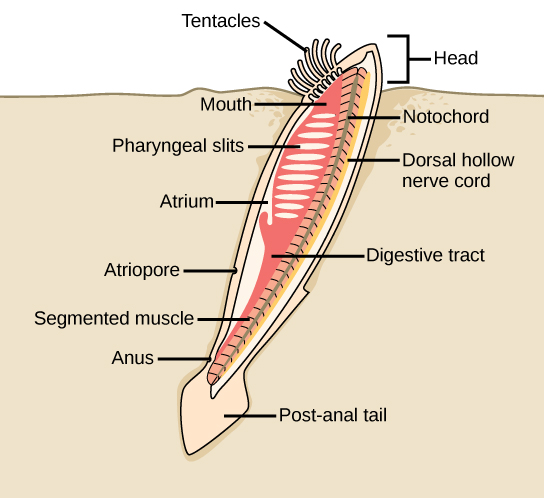
Classification of Chordates

The Chordata Phylum is divided into 3 subphylums:
1. Subphylum Urochordata
Their literal meaning – “tail cords.” This subphylum is also known as Tunicata. It is exclusively marine, and the notochord is generally present only in the larval tail. They also lack a backbone. Also referred to as invertebrates. They are non – segmented, barrel-shaped, and filter-feeding marine animals. Includes sea squirts and sea scalps.
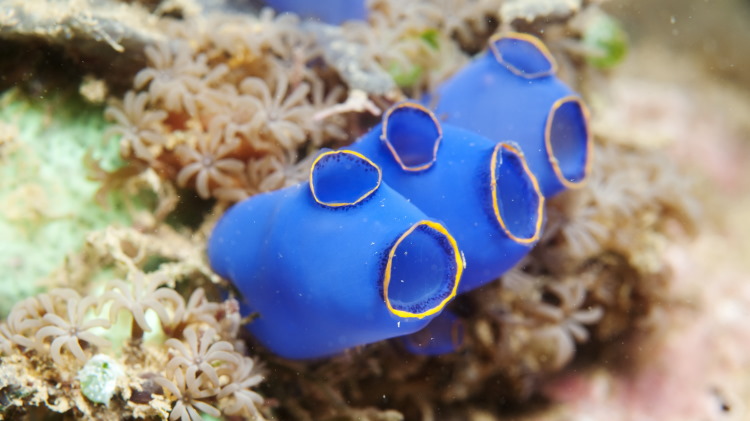
2. Subphylum Cephalochordata
Their literal meaning – “head cords.” This subphylum is often referred to as Protochordates. They are exclusively marine too. The notochord extends from the head to the tail region, and it is also persistent throughout the animal’s lifetime. They have small, segmented, elongated, soft bodies, usually found in soft bottoms. This set of animals lack a backbone and are also called invertebrates. They do not have scales, brains, limbs, etc.
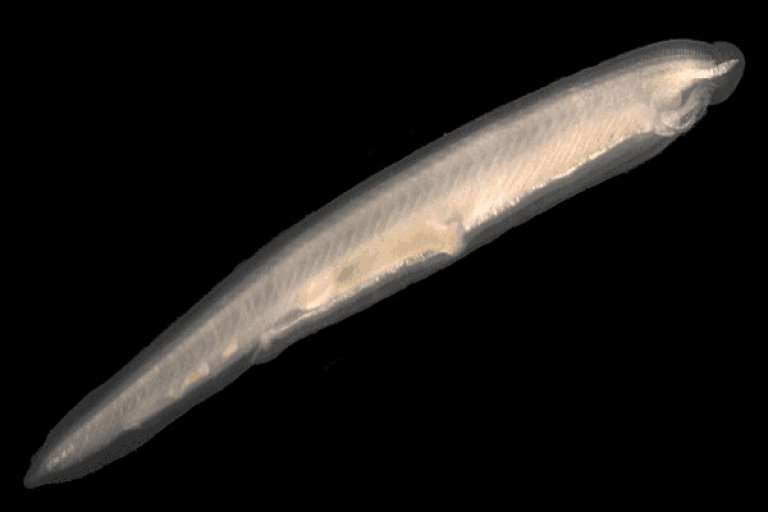
3. Subphylum Vertebrata
These animals are characterized by a backbone that runs in the middle of the body like those evident in fish. Human beings belong to this subphylum, and they are often referred to as ” Cranatia” as they have a head protected with a cranium/ skull. They also possess highly developed internal organs.
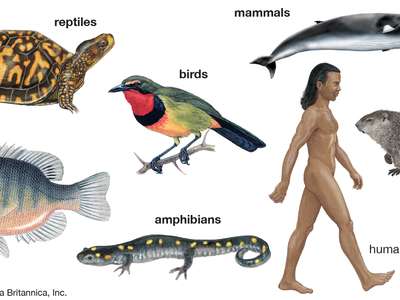
Examples of Chordates
1. Lampreys
They belong to the Vertebrate subphylum. It is a jawless fish that lives as a filter-feeder in its larval stages, but it transforms into a parasitic adult with teeth in its adult form. They possess external gills for breathing, a nerve cord, a notochord as well as a cartilaginous skeleton.
2. Sea Squirts
They come under the Urochordata Subphylum. They have a barrel-shaped body and are generally attached to a substrate. The larvae are like tadpoles, and they possess a notochord, a post-anal tail, pharyngeal slits, and a dorsal nerve.
3. Homo Sapiens or Human Beings
Coming under the subphylum of Vertebrata, this class of animals possess a distinct and true backbone and spinal cord, 3 pairs of sense organs, a distinct head with a differentiated tubular like a brain. The body of this animal is divided into trunk and tail regions. They also have a body-wide network of nerves comprising the Central Nervous System and Peripheral Nervous System. Some other examples include pandas, crows, sharks, salamanders, alligators, etc., are also some other examples. In simple terms, all amphibians, reptiles, mammals and birds comprise this group.
Conclusion
Let’s finish this lesson by understanding the key differences between the chordates and non-chordates are: 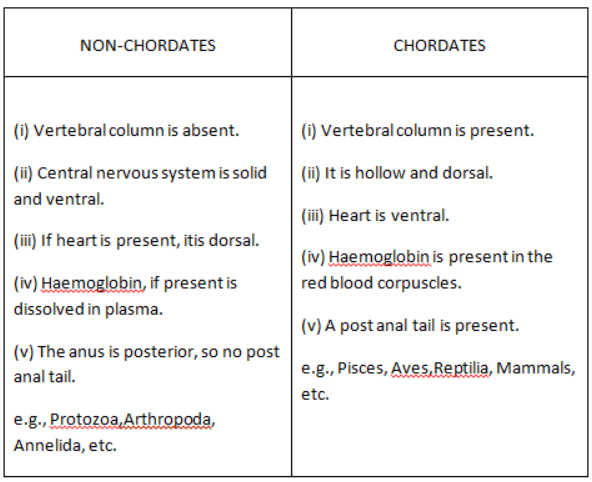
FAQs:
1. What makes an animal a chordate species?
An animal is classified as a chordate species if it generally possesses some of the main and prime characteristics of the Phylum Chordata, such as a notochord, pharyngeal slits, a post-anal tail, or a dorsal nervous hollow spine, etc.
2. How many classes are there in the Phylum Chordata?
The Phylum Chordata can be divided into 3 subphylums: Subphylum Urochordata, Subphylum Cephalochordata, and Subphylum Vertebrata.
3. Do the chordates have a ventral heart?
Yes, chordates have a ventral heart and not a dorsal one.
4. Which animal is and can be a chordate?
Any animal with a vertebrate or a backbone and spinal cord is called a chordate species.
5. What are the 7 characteristics of chordates?
Phylum Chordata possesses the following characteristic features:
- Notochord
- Dorsal Nerve Cord
- Pharyngeal Slits
- Post anal Tail
- Bilaterally symmetrical, triploblastic, coelomic, and segmented body
- The body design is complex and well-differentiated
- The body has an organ system level of organization
6. Do chordates have a notochord?
Yes, the chordates are named for the notochord: a flexible, rod-shaped structure found in the embryonic stage of all chordates and the adult stage of some chordate species.
We hope you studied this lesson and learned something cool about the Chordates! Join our discord community to get any questions you may have answered and engage with other students just like you! Don’t forget to download our App to experience our fun, VR classrooms – we promise, it makes studying much more fun!😎
]]>